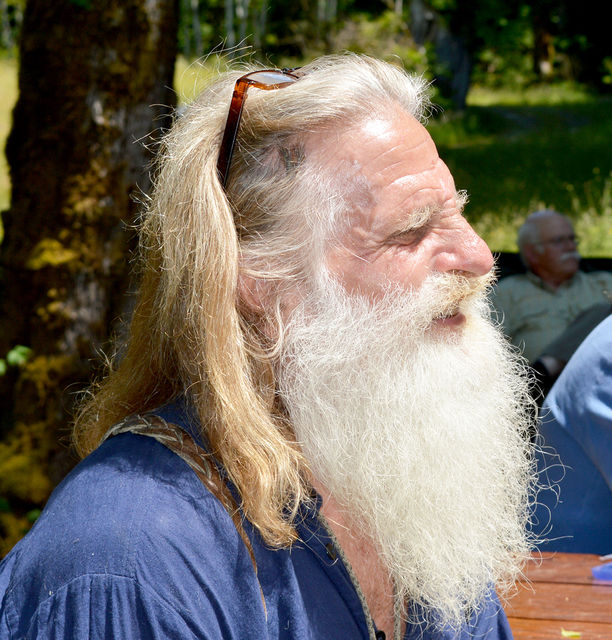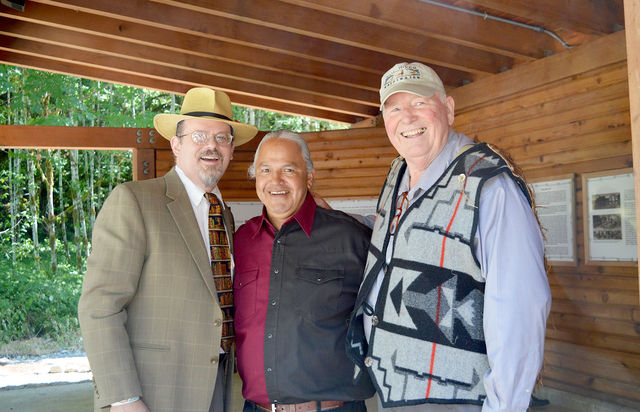A dedication ceremony for a monument recognizing the shipwreck of the Hawaii-built schooner Sv. Nikolai was held on Saturday, June 20 near the entrance to the Hoh Rain Forest entrance to Olympic National Park, south of Forks, Washington. The story
A dedication ceremony for a monument recognizing the shipwreck of the Hawaii-built schooner Sv. Nikolai was held on Saturday, June 20 near the entrance to the Hoh Rain Forest entrance to Olympic National Park, south of Forks, Washington.
The story of the Sv. Nikolai is tied to Russian Fort Elisabeth/Paulaula Heiau at Waimea through the schooner built likely of koa wood by Kamehameha. One of the interpretive panels located inside the monument displays a vintage map of the almost-200-year-old fort at Waimea.
Construction of the Sv. Nikolai monument was overseen by Forks, Washington residents Bill and Kitty Sperry. Sperry is the past president of the Association of Washington Generals, a trade and international relations promotion organization out of the office of Washington state Lt. Gov. Brad Owen.
Community organizations on the Westside are planning a celebration to mark the bicentennial of the construction of the Russian American Company fort in mid-September 2016.
Members and friends of the Rotary Club of West Kauai have volunteered one Saturday a month for over a half-dozen years to clear the Waimea fort of brush. The distinctive lines of the fort are now visible after years of being overgrown.
The 45-foot-long schooner Sv. (Saint) Nikolai shipwrecked on the Pacific Coast of Washington state in 1808.
Aboard was Timothei Tarakanov, a Russian American Company Russian fur hunter (promyshlennik). About eight years later Tarakanov arrived at Waimea to assist Dr. Georg Schaffer, a German physician and overseer of the RAC employees stationed at Waimea.
Schaffer and Kaumualii joined forces in converting the site of the Paulaula heiau into a star-shaped, European-style coastal fort.
The RAC traded a cargo of sea otter furs for the schooner in Baja California.
The schooner was built by Kamehameha in Waikiki in about 1805 and named Tamana after Queen Ka‘ahumanu. The king planned to use the schooner in his planned invasion of Kauai. Disease struck the king and his troops on Oahu and the invasion was scuttled.
In 1805 Yankee sea captain William Shaler traded his ship Lelia Byrd for the Tamana. Shaler hired a Yankee sea captain to use the Tamana to trade along the California coast.
In 1803 Richard Cleveland, Shaler’s maritime partner, landed a stallion and mare in Hawaii as a gift to Kamehameha, introducing horses to Hawaii.
In addition, in 1808 the RAC ship Kadiak sailed offshore of the Sv. Nikolai off the Washington coast.
The two ships were sent from Sitka, Alaska to scout for the site of a Russian colony in the Pacific Northwest.
In 1817 the RAC group was forced by Kaumualii to abandon the fort. They sailed to Hanalei Bay, and later Honolulu Harbor, aboard the Kad’iak.




